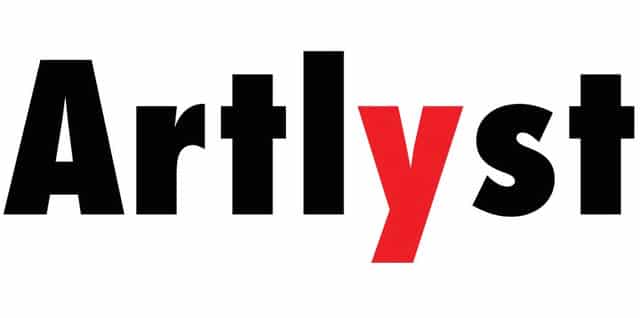So, I was about to launch into thoughtful musings on that inexplicable relationship between artist and muse and how the female body just happens to lend itself to being pored over to varying degrees of distraction. Egon Schiele is a classic example of an artist walking a very thin tightrope between viewing the female body as an artistic thing of uglybeauty and uncomfortable leering (the underage females are particularly unsavoury). Yet there are few on Artlyst’s lyst of mysogynystyc artworks that are inexcusably exploitative, certainly to the degree we see in the worst cases of visual marketing (see various retro adverts). Several are defendable, but of course, feel free to argue with me.
Dalí’s rhino horns penetrating his lifelong muse Gala are I think a manifestation of his own impotence: Gala famously enjoyed trysts with many other men and pretty much held Dalí under her pinkies. Against her dominance this image is a passive aggressive representation of an artist enslaved to his own – inactable – fantasies against a woman he held on a pedestal. Confined to a visual imagination, Dalí realises himself as crippled by his own futility.
With Manet’s Le Déjeuner sur l’herbe, like his Olympia, the female nude’s nakedness is pivotal to the point he is making; laying bare (pun absolutely intended) the hypocritical stance the bourgeoisie establishment embodied against ‘fallen’ women. It was the done thing to have loose women, and even go for some semi-clothed picnicking in front of some woodland scenery of impossible perspective, but heaven forbid anyone acknowledging it in society, let alone on a genteel gallery wall. The misogyny shown here is contained within a societal past, and Manet’s painting is actually satirizing it.
The same principle is at work in Courbet’s L’Origine du Monde: or Origin of the World. The art establishment in their starched stiffness salivated over ‘noble’ history paintings, full of gratuitous nudity to titillate owners while being ‘justified’ in that gods and mythical figures were on show. Giving a simple vagina a grandiose title satirizes this convention with savage humour, and in many ways is actually proto-feminist. See also Goya’s Maja Clothed and Unclothed: like Olympia, portraying – shock horror – an ordinary girl brazenly nude.
By contrast Picasso – serial womanizer and general snake conjurer (snigger) – spent much of his career making visual his own insatiable lust for women. Lucien Freud shagged many women and behaved atrotiously, but painted as many men as he did women just as bags of unappetising flesh: with a clinical coldness. Contrast with Picasso whose works just live for the curves and booty and hang the brain at the top of the jello.
On another level altogether sit Mel Ramos and Allen Jones (whose RA retrospective I slated for exactly this reason) could be said to satirize the sexualisation of advertising and media with their pin up bimbos in bright colours, but it takes one image to make this point, not a whole labored career with no variation. Then it just tips into one man’s plastic fantasy. Eurgh. Similarly, it takes one Hiropon by Takashi Murakami to lampoon the sheer levels of grotesquery Japanese visual depictions of young girls have become, but when someone pays $427,500 for it you’ve got to marvel at the buyer’s ‘appreciation of sharp visual satire’. Ahem. Just like Richard Prince’s appropriation of the sexualised imaged of an underage Brooke Shields: it highlights a culture totally willing to do this to their own children and a receptive audience for it, but many viewers will not recognise the appropriating layer which turns it into satire and see it only for the unhealthy kiddie imagery the original is.
See Our Top 10 Sexist Artworks
Words/photo: artbytch@artlyst.com © 2015 artlyst all rights reserved


